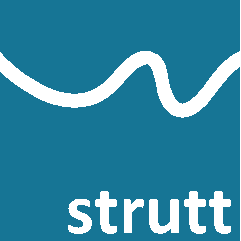
Strutt|Criteria|Ratings|Sound Insulation|Speech Privacy Class (SPC) calculates the Speech Privacy Class (SPC) and inserts it into the current row of the worksheet.
SPC is an alternate rating for speech privacy developed by Bradley and Gover based on statistical analysis of meeting room speech.
Unlike the Speech Privacy rating, which only considers the audibility of speech at different levels of vocal effort, SPC allows an estimate of how often speech of a particular level will be audible (or intelligible) in the receiving room to be quantified.
As such, SPC is best suited for applications where confidentiality is required.
SPC is based around the uniform-weighted frequency-averaged signal-to-noise ratio `SNR_(uni 32)`, which is calculated as follows:
`SNR_(uni 32)=1/16 sum_(f=160)^5000 SNR(f)_(-32)`
where:
`SNR(f)=L_("speech")(f)-L_("noise")(f)`
`L_("speech")(f)` is the speech signal in the receiving room in a particular 1/3 octave frequency band from 160 Hz to 5000 Hz
`L_("noise")(f)` is the noise level in the receiving room in a particular particular 1/3 octave frequency band from 160 Hz to 5000 Hz
`SNR_(-32)` indicates that the signal to noise ratio is clipped such that if `SNR<-32, SNR=-32`
`SNR_(uni32)` has been found to correlate closely to speech intelligibility scores and indices such as Articulation Index (AI), which allows threshold values of `SNR_(uni32)` for intelligibility and audibility to be determined:
The Speech Privacy Classs `SPC` is defined as:
`SPC = L_("d(avg)")+L_("N(avg)")`
where:
`L_("d(avg)")` is the arithmetic average of the 1/3 octave level difference from 160 Hz to 5000 Hz
`L_("N(avg)")` is the arithmetic average of the 1/3 octave background noise level from 160 Hz to 5000 Hz
In conjunction with research into the probability distribution of speech from statistical analysis of recorded meeting room activities, SPC allows the speech privacy for a partition to be quantified not only in terms of audibility of normal speech, raised speech etc, but also in the expected frequency of any privacy lapses (e.g. for a SPC value of 75, speech in the receiving room is expected to be audible every ~2 minutes, and intelligible every ~18 minutes).
Strutt uses the following SPC categories (the categories are primarily based on Bradley & Gover (2010)):
Category |
SPC |
Subjective Description |
| Not Private | <65 | Speech expected to be almost always intelligible (more than once a minute) and almost always audible |
| Not Private | <70 | Brief phrases expected to be generally intelligible (once every ~minute); speech sounds almost always audible |
| Minimal Speech Privacy | <75 | Brief phrases expected to be frequently intelligible (once every ~2 minutes); speech sounds generally audible (once every ~minute) |
| Standard Speech Security | <80 | Speech expected to be occasionally intelligible (brief phrases intelligible every ~15 minutes); speech sounds frequently audible (once every ~2 minutes) |
| Speech Security | <85 | Speech expected to be very rarely intelligible (brief phrases intelligible every ~2 hours); speech sounds occasionally audible (once every ~15 minutes) |
| High Speech Security | <90 | Speech essentially not intelligible (brief phrases intelligible every ~16 hours); speech sounds very rarely audible(once every ~2 hours) |
| Very High Speech Security | >=90 | Speech unintelligible; speech sounds essentially not audible (audible once every ~16 hours) |
References:
Bradley, JS and Gover, BN (2009) Speech levels in meeting rooms and the probability of speech privacy problems JASA 127(2), pp815-822
Bradley, JS and Gover, BN (2010) A new system of speech privacy criteria in terms of Speech Privacy Class (SPC) values Proceedings of 20th International Congress on Acoustics, ICA 2010